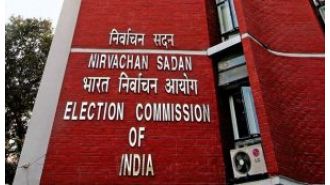Dispute Resolution – How To Avoid It And How To Deal With It
I was looking back at some old notes from when I first got into the CEO coaching business a dozen years ago and reflected on the nature of my relationships with CEOs. One of the things that bubbled to the surface is I have been involved in a lot of internal and external dispute resolutions.
There is a distinct difference between internal disputes such as removing a key C-suite team member and external disputes such a dealing with a board of directors or venture capitalist. Some are both internal and external — a board of directors fighting amongst itself about replacing a CEO.
[Almost every startup company CEO will be replaced within 5 years of venture capital funding.]
Add in the element of family members and I have dealt with a great number of seemingly impossible disputes. Every single one was eventually resolved. The universe of disputes I have dealt with is orders of magnitude 35 over the last 12 years.
What is the nature of a dispute?
Most disputes I am called in to deal with have become wildly emotional and the warring parties cannot possibly resolve them themselves. The second emotion is injected into a dispute, it becomes infinitely more difficult to resolve. Most disputes have had a few months to marinate in this emotion and are often on the border of being toxic.
What I want to tell you today is that all of this toxicity and gigantic investment of time and money is almost completely avoidable.
How do you avoid disputes, Big Red Car?
I did not say the disputes are “completely avoidable,” dear reader; I said the “toxicity and gigantic investment of time and money” is avoidable. Go re-read that sentence.
The best way to avoid disputes is to anticipate them. Sounds easy, but how does one do that?
1. Ensure you have the pertinent basic documents — articles of incorporation, bylaws, shareholder agreement, operating agreement, employment agreements with performance review provisions — and that they directly address the resolution of disputes.
I like documents that require a written statement as to the nature of the matter in contention, direct negotiation, and a requirement to lay out a proposed resolution BEFORE you can declare a dispute and send it on to binding arbitration.
This small amount of process and formality — which is very rare to see in a form document — will solve more than half of such matters, again, before they become toxic. Sometimes just writing out the contentious subject is enough for the parties to see things from the other person’s perspective.
2. Inject binding arbitration — after direct negotiation — into every document as the ultimate dispute resolution methodology rather than spending gobs of money paying off lawyers’ beach houses.
“American Arbitration Association, Commercial Arbitration Rules, Expedited Arbitration” is what you are looking for.
3. Communicate directly with the potential parties to a dispute — founders, management, board of directors, venture capitalists, investors, shareholders — about contentious issues before they rise to the level of a dispute.
I am a huge fan of a “walk around the lake” with a troublesome board member or investor. I once had an investor/boardmember who was really a horse’s butt with the innate ability to cast any board meeting into an MMA shit storm, and would meet him the night before every board meeting to take a long walk and chat about the board agenda that completely took the piss out of him. He was almost docile at the board meeting if I did my job correctly.
4. The second you believe you are on the verge of a dispute immediately personalize it. Go speak directly to the potentially warring parties before they take a formal step to declare a dispute. Reason together and try not to make it worse.
Negotiate, Big Red Car? Tell me about that.
Ahhh, dear reader, in life we don’t ever get what we deserve, we get what we negotiate. Negotiation is an art form, but it is a skill that can be taught and learned. It is a process and a multi-touch process.
If you don’t feel like you are a process-driven skillful negotiator, go study it and get training. Honestely, it is like learning to play golf and anybody can get good at it if you take a few lessons.
When I worked for a big oil company and spent hundreds of millions of their dollars annually, we were all required to go annually to the week long Chester Karass negotiating seminar which was fabulous training.
One of my courses in Houston was taught by Chester himself. We were given an interim exercise to buy a suit at Brooks Brothers at less than the asking price and to get a free tie in the bargain. Using what I was taught I got the suit — very nice Golden Fleece suit — but I also got a tie and a pair of socks thrown into the bargain.
I sometimes wonder if the Brooks Brothers staff didn’t say to each other, “The Chester Karass negotiating seminar is in town, so get ready for the free tie shtick.”
The lowly Letter of Intent
There is a tool that makes resolving disputes infinitely easier; it is the lowly and often maligned Letter of Intent.
There has never been a dispute I walked into wherein there was an existing Letter of Intent that outlined the dispute or laid out a resolution. Not once.
In every instance in which I successfuly assisted in resolving a dispute — I am batting 1.000 — it was always built on the foundation of a Letter of Intent.
My first move is always to get the warring parties in the same room (preferably at a dinner table) and speaking face to face. This is often harder than you can imagine, but I try to get that done. It is often quite emotional and the parties may need to purge themselves in front of me. Lots of bad acting going on.
I try to find one single thing they agree upon and say, “Well, since you agree on that, I think maybe it would be a good starting point to lay out a Letter of Intent to see what else you agree upon.”
I always make the Letter of Intent trackable as to changes, date it, and put a deadline in it. You would be surprised at how quickly the warring parties begin to embrace the time line imposed by the Letter of Intent. This small bit of discipline keeps things moving.
Then, you try to identify the three things the parties want the most. Often it will surprise you. Remember this — the warring parties often do not have the same three things as their most important considerations. In fact, they never do.
I always try to get my client to make the first offer and I have them make it exactly as they want. I never change anything — not completely true as I try to head off the truly unworkable things.
Then, I ask, “What on this Letter of Intent can you live without?”
I always tell my client, “This Letter of Intent will NOT be the final agreement, but it will start the process.”
At the same time, I am whispering to the client, “Take the emotion out of this. It’s a business deal.”
Does that work? Hell no. But it does pour a little oil on the water and drives us toward the most important place — a place where the dispute can be resolved.
What does the other party say?
The other party reads the Letter of Intent and always says, “Hell no, I’d never agree to this. It’s insulting.”
I say, “Do you have a red pen? If so, mark out or change what offends you and let me see what can get done. Put your deadline on it.”
If the other party makes changes to the document — completely trackable — then we are off to the races.
Thereafter it becomes a seven touch process wherein the Letter of Intent is batted back and forth with the breadth and depth of the differences narrowing with each exchange.
I position myself as the “honest broker” (I genuinely am.) and have often gotten a note from a warring party saying my involvement and fairness was what allowed them to make a deal. I will also send a lengthy email or letter outlining the logic behind my client’s changes to the Letter of Intent and why I think they are fair and practical. I am an advocate in a fair and balanced way, but I am always my client’s advocate. This gets my client out of the line of fire and depersonalizes the negotiation.
Near the end the tennis match of batting the Letter of Intent back and forth, there will come a time when the parties become exhausted and this is when the final concessions are made that result in a signed Letter of Intent.
Neither party will have gotten what they wanted at the beginning, but both parties will sign the Letter of Intent.
The extra innings
A Letter of Intent is sent to the lawyers with guidance to wrangle it into a binding agreement. The lawyers are always injecting themselves into the final agreement, but the most important feature of the Letter of Intent is that it has settled the business terms of the deal.
I have never met a set of lawyers who have not taken a good hard swat at screwing a deal up, but, again, the Letter of Intent is the meeting of the minds of the parties.
There is alway, always, always a seemingly insurmountable problem just before the final agreement is signed and the deal performed. Usually it involves money.
Be prepared for it and work through it with the same tenacity as you did the Letter of Intent.
Bottom line it, Big Red Car, tide is coming in and we want to catch some redfish
Fine, dear reader.
1. You can prevent disputes from becoming emotional, toxic, and expensive by anticipating them in a critical suite of documents.
2. The Letter of Intent is the best tool to resolve seemingly insurmountable disputes.
3. Know that all disputes become emotional and try to temper your own emotions.
4. In life you don’t get what you deserve; you get what you negotiate.
5. Use binding arbitration as the ultimate dispute resolution technique if it gets that far. Do not litigate.
6. There may be a role for an honest broker — somebody with wisdom, experience, and fairness — to guide you to the finish line.
But, hey, what the Hell do I really know anyway? I’m just a Big Red Car. Be well, world.
If I can help you resolve a dispute, call me.






